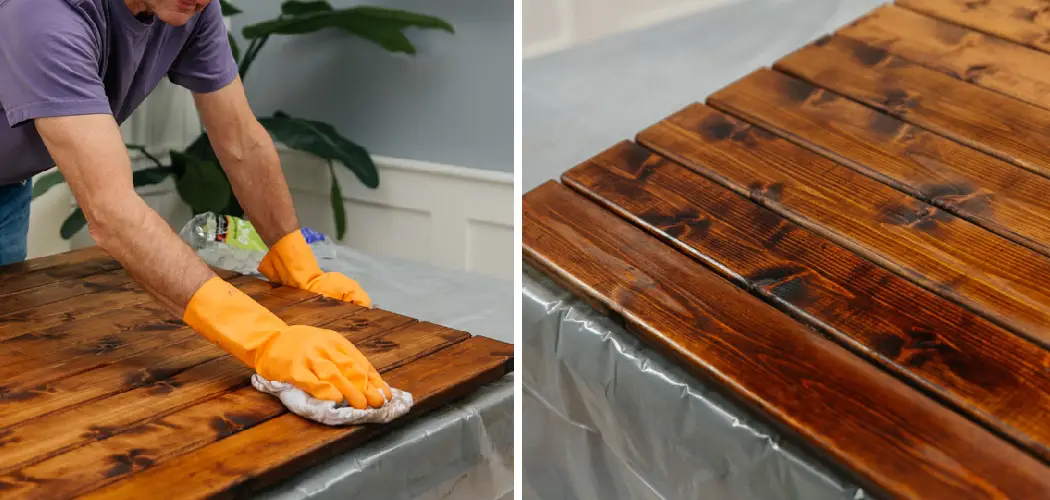Removing excess stains from wood is important to ensure it is properly finished and looks its best. Wood staining adds a beautiful finish to furniture but can easily become uneven or streaky if too much stain is applied. Excess stains on wood can lead to blotchy areas that are difficult to correct, so removing excess stains as soon as possible is important.
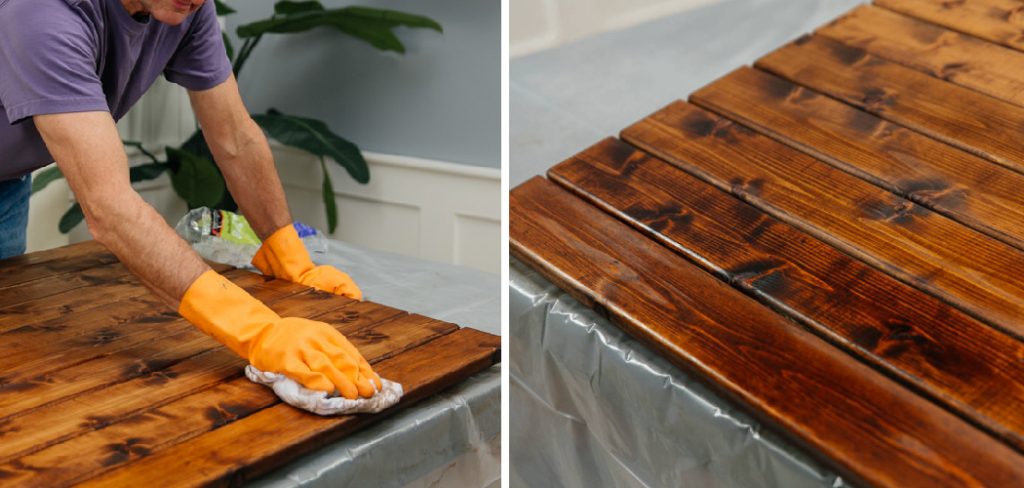
The advantages of removing excess stains from wood are numerous. Firstly, it is a cost-effective method for restoring the natural beauty of wood furniture or floors. The methods used provide an inexpensive and quick solution to restore the original look of stained wood without buying new materials. In this blog post, You will learn how to remove excess stain from wood.
Step-by-Step Processes for How to Remove Excess Stain From Wood
Step 1: Inspect the Stained Area
Before tackling the stain, it is important to inspect the stained area. If the stain has been left in place for a prolonged period, it may be more difficult to remove than if it had been removed shortly after application. It is also important to determine what type of wood was used and what type of finish or sealer was applied, as this will affect the cleaning product needed.
Step 2: Select the Appropriate Cleaning Product
Once you’ve determined the type of wood and finish, select a cleaning product designed for that particular material or combination. Several products on the market are specifically designed to remove excess stains from wood surfaces, including detergents, cleaners, and wood bleachers.
Step 3: Prepare the Area for Cleaning
Once you have selected a cleaning product, preparing the area for cleaning is important. This includes removing any furniture or items from the area and covering areas you do not wish to be stained. Removing protective finishes or sealers that were applied previously may also be necessary.

Step 4: Apply the Cleaning Product
Now it’s time to apply the cleaning product. When applying, cover only the stained area and not any surrounding areas. If the product is liquid or gel, use a sponge or cloth to apply it directly onto the surface. For powder-based cleaners, sprinkle the powder over the stained area and let it sit for several minutes before wiping it away.
Step 5: Scrub Away Excess Stain
When applying cleaning products, it is important to scrub away any excess stain that has built up on the surface. This can be done using a damp rag or sponge as you spread the product over the area. Be sure to scrub in a circular motion to ensure that all of the excess stains are removed.
Once the stain has been scrubbed away, it is important to rinse and dry the area. To do this, simply use a damp cloth or sponge and then dry with another clean towel. Ensure not to leave any significant amount of liquid behind, which can cause further staining.
Step 6: Apply a Sealer or Finish
Once the area is clean and dry, apply a sealer or finish to protect the wood from future staining. This is an optional step but can be very beneficial if you use the surface often. Consider adding a few finishing touches to the wood after it has been cleaned and sealed. This could include applying a wood polish or beeswax to help protect the surface from further staining.
Step 7: Monitor for Future Staining
Once you have finished cleaning and sealing the wood, monitoring the area for future staining is important. Pay close attention to any potential problems and take steps to address them as soon as possible to avoid further damage or staining.
Finally, if you notice that new stains have appeared or old stains are returning, it may be necessary to repeat the cleaning process. Be sure to select a new or different product for each cleaning session to remove any residue and protect the area from further damage. Following these steps, you can quickly and effectively remove excess stains from wood surfaces.
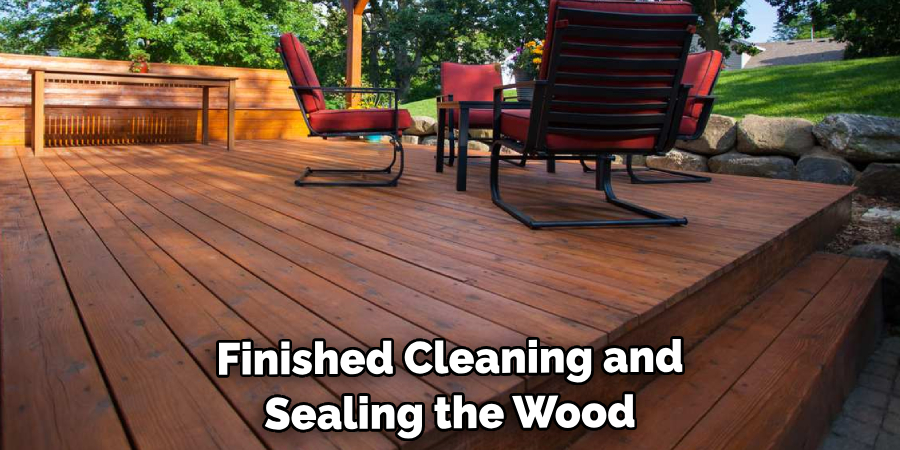
Tips for How to Remove Excess Stain From Wood
- Ensure you wear the right protective clothing, such as gloves and a respirator mask to protect your skin and respiratory system from any toxic fumes or vapors associated with the cleaning process.
- To ensure your safety, open all the windows in the area where you are working before starting to remove excess stains. This will help ventilate the area and reduce the chances of becoming exposed to toxic fumes.
- Make sure the surface you are cleaning is entirely dry before beginning the process of removing excess stains. If it’s still damp, wait until it’s completely dried off before proceeding.
- Use a natural product such as vinegar or lemon juice to remove any built-up excess stain gently. Do not use harsh chemicals, as this could damage the wood surface.
- After you’ve finished cleaning, you may want to apply a sealant or varnish to protect the wood and ensure that it stays looking its best for longer.
- Lastly, always clean up any spills or messes immediately with a damp cloth. This will protect the wood’s surface from further damage or staining.
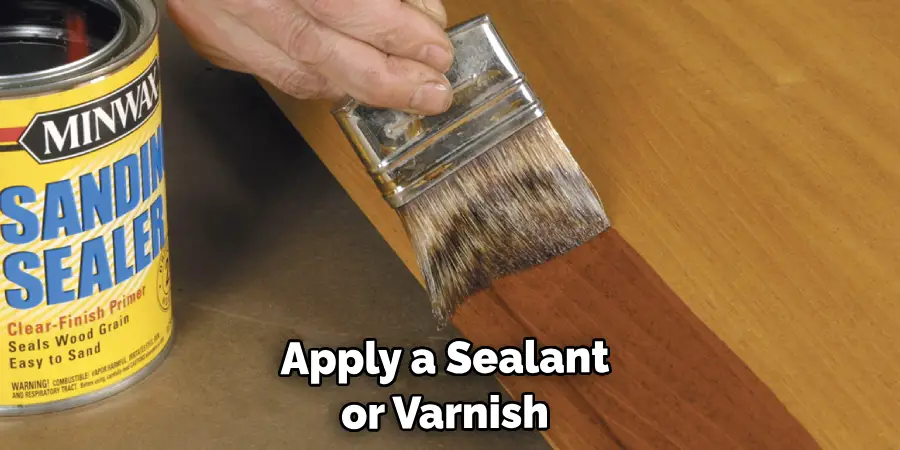
Following these steps can help you safely remove excess stain from wood and keep it looking great for many years.
How Do You Avoid Damaging or Discoloring the Wood When Cleaning Off the Excess Stain?
You must avoid damaging or discoloring the wood when cleaning off the excess stain. To do this, use a soft rag and dampen it with mineral spirits or paint thinner. Gently rub the surface of the wood to break it up and remove any residue. Use a scrub brush with soft bristles to work into crevices if necessary.
Be sure to avoid scrubbing too hard, damaging the wood’s surface. Once you have removed the excess stain, use an appropriate cleaner and polish the wood to restore its natural shine.
It is also important to note that when applying stain, it is best practice to apply a thin coat and then leave it to dry for the time the manufacturer recommends. If you wait too long before wiping off any excess stain, it can be much more challenging to remove and can cause damage or discoloration to the wood’s surface. Therefore, remove excess immediately when applying stain to prevent these potential issues.
What Are Some Potential Risks Involved With Using a Chemical Cleaner or Remover to Clean Up the Excess Stain?
When using a chemical cleaner or remover to clean up the excess stain from wood, it is important to read and follow all safety instructions on the product’s label. Additionally, there are some potential risks involved in using these products:
- Chemicals can emit fumes that may be hazardous. It is important to work in a well-ventilated area and to wear protective clothing, such as gloves, goggles, and a mask.
- Some chemicals can be corrosive or irritate skin, eyes, and lungs. It is important to take caution if using these products on delicate surfaces such as antiques or furniture with decorative inlays.
- If using a chemical stripper, it is important to ensure the product does not contain bleach or other chemicals that may damage the wood.
- When using a chemical cleaner or remover, there is always a chance of discoloration of the wood if left on too long. Follow instructions carefully and use only as directed.
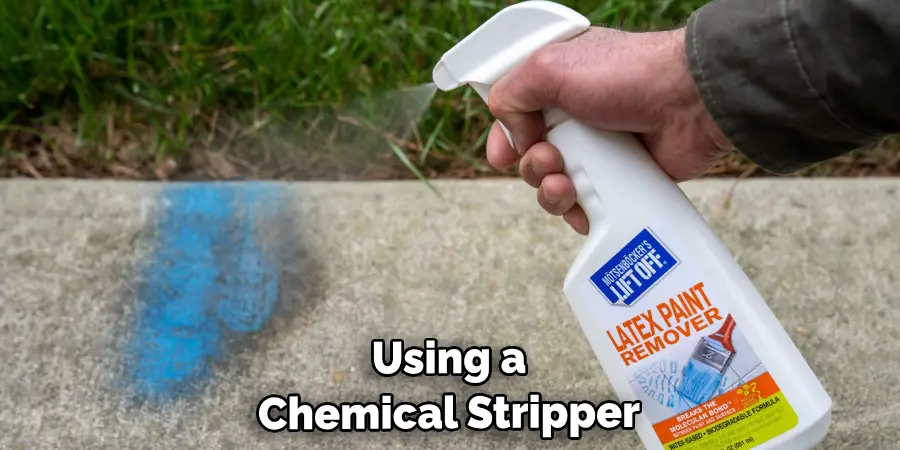
By taking these precautionary measures, you can help to reduce the risk of harm when using a chemical cleaner or remover to clean up excess stains from wood. Read all safety instructions carefully and follow the directions provided on the product’s label.
How Often Should You Clean Up Any Excess Stain to Ensure It Doesn’t Become a Permanent Stain on the Wood?
You should be careful to regularly check for any excess stain when staining wood and ensure it is cleaned up as soon as possible. It can be difficult or impossible to remove if the paint dries without damaging the wood.
If you notice a spot that has dried on your project, you may need to sand down the area and re-stain it. The best way to avoid this is to check the surface regularly and remove any excess stain that has pooled or may have dried in an aperture within the wood grain.
To clean up excess stains from wood, use a cloth or damp sponge and gently wipe away the stain with a circular motion. It is important to act quickly when you notice a spot of excess stain, as dried-on stains can be harder to remove and can damage the wood.
When cleaning up any excess stain, it is important to use caution and only use a damp cloth or sponge. Do not scrub too hard to avoid damaging the wood’s surface. You should also make sure you use the appropriate cleaner or solvent for the type of wood you are working with.
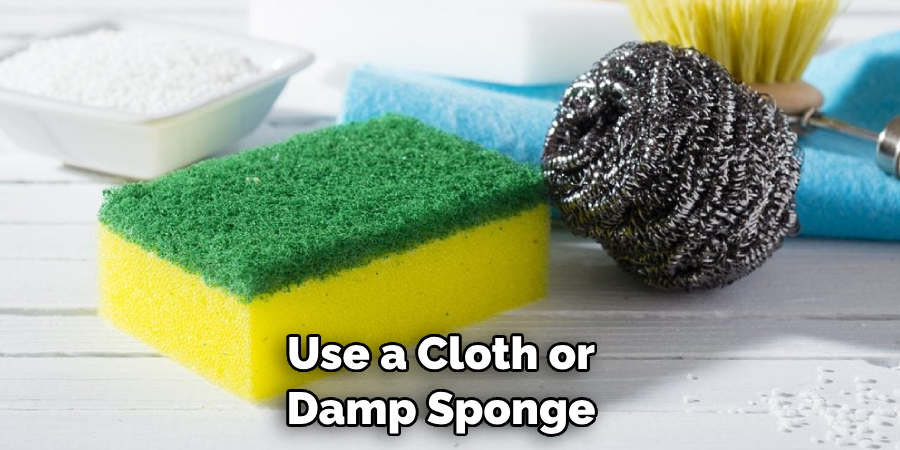
What Are the Best Methods for Removing Excess Stain From Different Kinds of Wood?
The best methods for removing excess stain from different types of wood vary depending on the type of wood and how much stain needs to be removed. Generally, it’s important to start using a mild soap and water solution, followed by applying mineral spirits or paint thinner. The key is to use caution with all methods to avoid damaging the wood surface.
- For Hardwoods: To remove excess stains on hardwood surfaces, use a soft cloth dampened with mild soap and water solution to wipe away the stain gently. If this does not remove all of the stains, use mineral spirits or paint thinner on a clean cloth. Work in small sections at a time, and rub in the same direction as the wood grain.
- For Softwoods: For softer woods, such as pine and cedar, use a soft cloth dampened with a mild soap and water solution to wipe away the excess stain. If this does not remove all the stains, try using a fine-grit steel wool pad or 0000-grade steel wool combined with a mild soap and water solution. Be sure to rub in the same direction as the wood grain.
- For Varnished Woods: For varnished woods, start with a soft cloth dampened with paint thinner or mineral spirits. If this does not remove all the stains, try using a fine-grit steel wool pad or 0000-grade steel wool combined with a mild soap and water solution. Again, rub in the same direction as the wood grain.
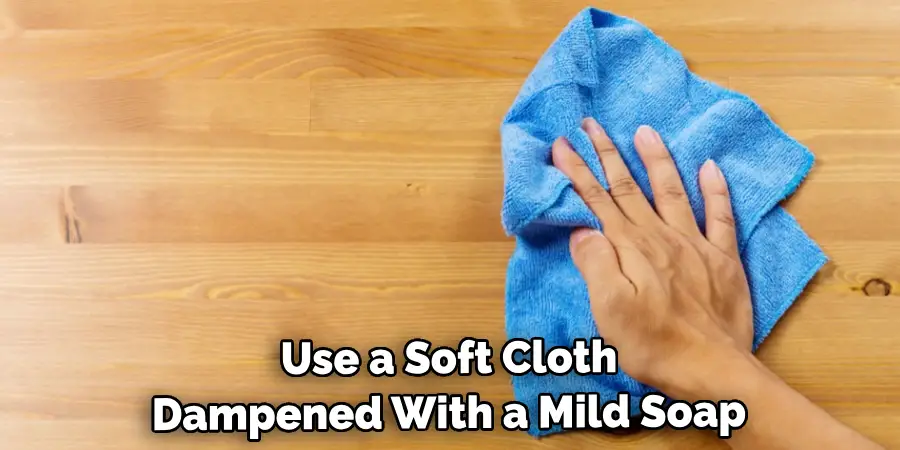
It is important to remember that these methods may only work for some types of wood and should be used cautiously. If the above methods do not remove all the stains, you can also use a commercial-grade product designed specifically for removing the excess wood stain.
Conclusion
In conclusion, removing excess stains from wood may seem difficult, but it can be done quickly and effectively with the right tools and techniques. You can easily restore your woodwork to its original splendor with a little patience and an understanding of the different methods available. There are many commercial products available that offer varying degrees of success in removing excess stains.
However, if you prefer natural methods, you can experiment with different household ingredients and see which option gives you the best results. Ultimately, it’s important to remember that removing excess stains from wood is a task you should take seriously to preserve its beauty for years. I hope this article has been beneficial for learning how to remove excess stain from wood. Make Sure the preventive measures are followed chronologically.

